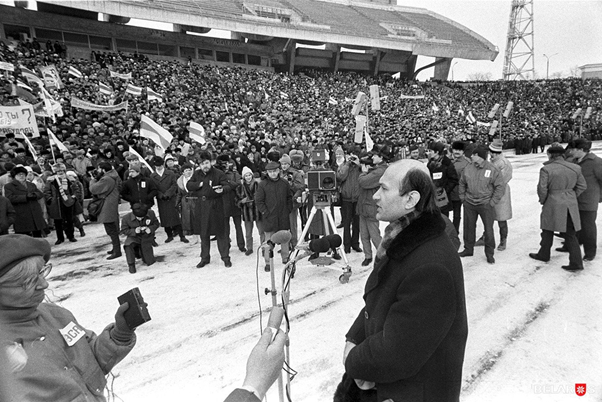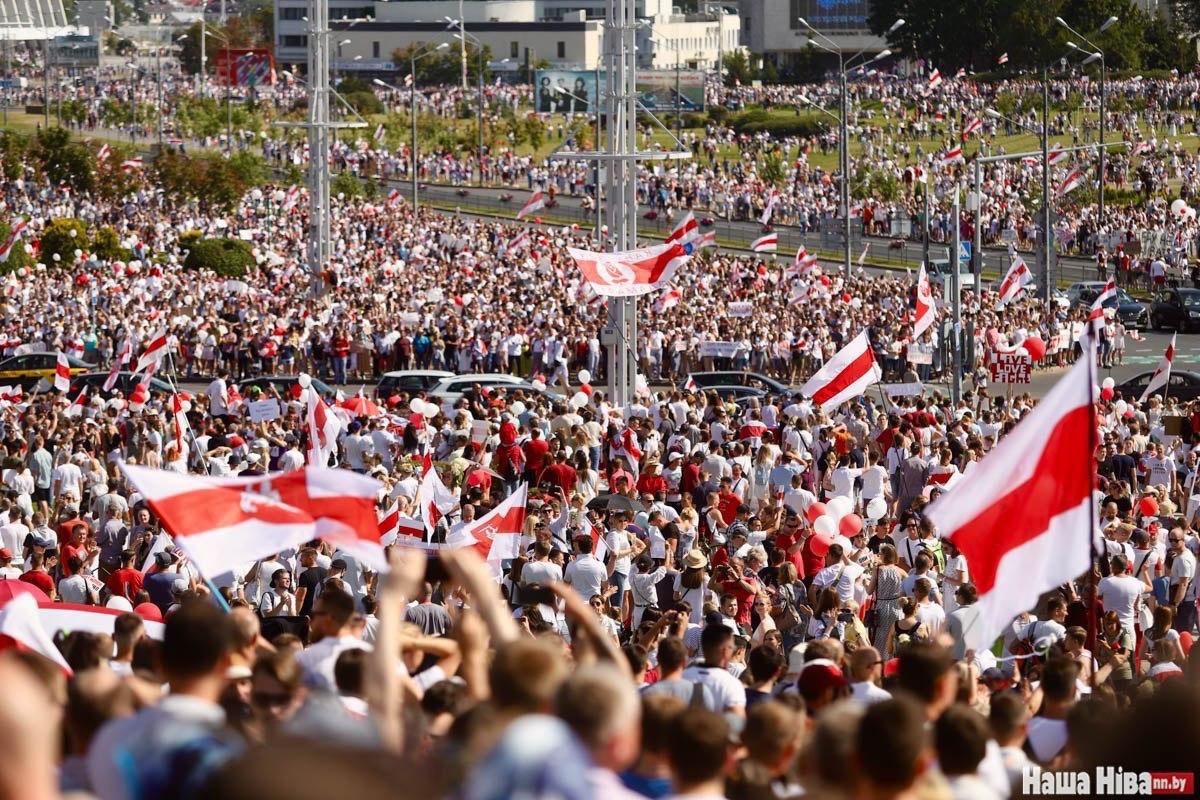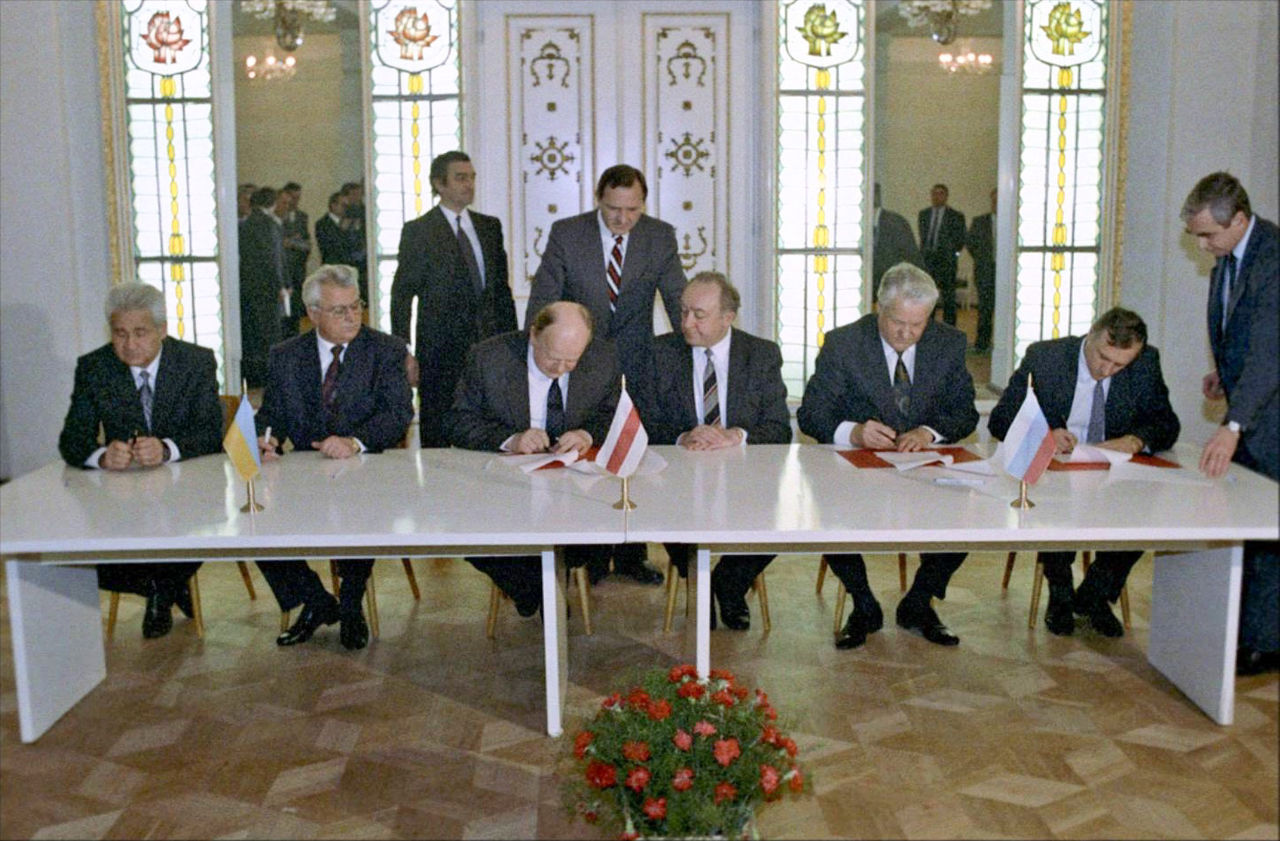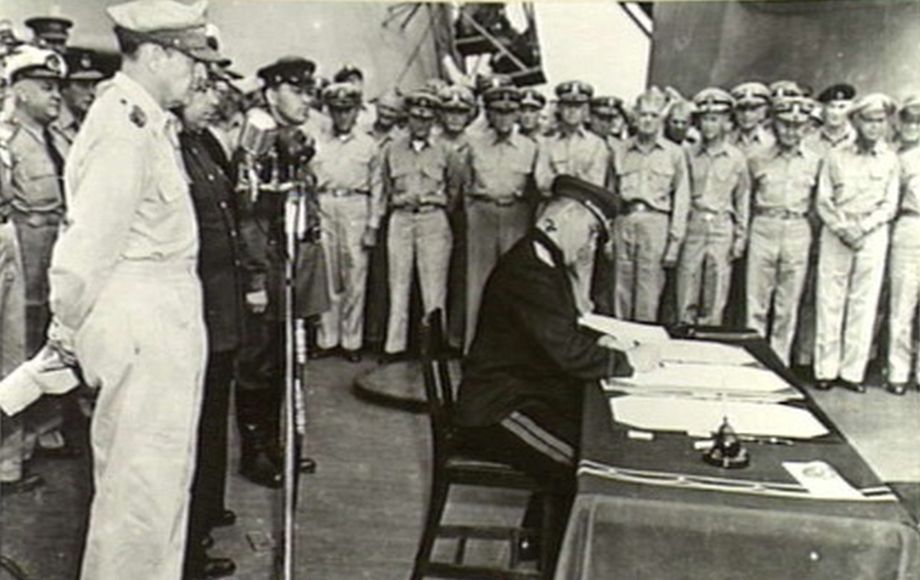Across Minsk and Belarus supporters of the opposition are hanging up and waving white-red-white flags – very different to the official state flag, which is red and green. Why does Belarus have TWO flags?
The current state flag was adopted in 1995 and is effectively the same as the flag of Soviet Belarus without the hammer and sickle. It replaced the white-red-white flag, which by many Belarusians has been seen as the legitimate national flag.

The white-red-white flag, along with the Pahonya (a mounted knight – a symbol of the Grand Duchy of Lithuania) was originally adopted over 100 years ago by the short-lived Belarusian National Republic.

After Germany and the newly-formed Soviet Union signed the Treaty of Brest-Litovsk, Belarusians took the opportunity to declare independence on 25 March 1918. The same day, they adopted this resolution on national symbols:
1. Due to the fact that almost all towns in the Minsk province used the ancient Pahonya in their seals, we resolve to retain this heritage of the Grand Duchy of Lithuania. The Committee has unanimously adopted the Pahonya as the state emblem of the independent Belarus to come.
2. Due to the fact that Belarusian folk art is dominated by white and red Ornaments, it is considered appropriate to use these colors in the Belarusian national flag. Thus the Committee has resolved that the flag is to consist of three horizontal stripes, white, red, and white in equal widths, and its length be twice its width.”

The white red white flag was designed by Klawdziy Stsyapanavich Duzh-Dushewski (Клаўдзій Сцяпанавіч Дуж-Душэўскі), a Belarusian architect and politician who was based in St Petersburg until 1918.
The BNR tried to form its own army, schools +diplomatic missions but within months, in January 1919, its government was forced to leave Minsk ahead of the advancing Red Army. It operated in Lithuania before going into exile. This was the first modern independent Belarus.
In the 1940s and 50s, the flag was the symbol of the anti-Soviet underground and it re-emerged in public the late 80s, used by the Belarusian People’s Front movement led by Zenon Poznyak.

Belarus declared independence soon after the 1991 August putsch. Stanislav Shushkevich became the new de-facto president and on 19 September the white red white flag and Pahonia were re-adopted as national symbols in a clear break with the Soviet past.
When young former collective farm manager Aliaksandar Lukashenka won the presidential election in 1994 he promised to return Soviet symbols, which he did after a referendum in May 95. After a chaotic start to independence, many in Belarus were nostalgic for the stability of the USSR.
The white-red-white became associated with the opposition. At the biggest anti-regime demonstrations people have carried the flag – after elections in March 2006 and December 2010, for example.
In the past 25 years, the government has gone to great lengths to make the flag disappear from public view, confiscating it at sports events and from demonstrators.

Most recently police went to the effort of removing curtains from an apartment balcony when someone hung them up to look like the flag.

After so-long with the current state flag, a lot of people irrespective of their politics, feel a strong affinity with the green-red. They associate it with their national sports teams, for example, not just the state.

But in the past few weeks for the thousands attending elections rallies for Tikhanovskaya, the white-red flag and Pahonya has got a new lease of life and again become a national symbol of change for Belarus.


https://twitter.com/NowBelarus/status/1295069256623837184
21st Century #LadyGodiva, a woman marches through her city on a horse carrying a white-red-white historical flag of #Belarus. pic.twitter.com/dhE2szPtvZ
— Belarus Free Theatre (@BFreeTheatre) August 15, 2020
https://twitter.com/NowBelarus/status/1294676807636180992
https://twitter.com/NowBelarus/status/1294677842547138561
Belarusians closely follow Gene Sharp's advice: Nonviolent Action Method #18: Displays of Flags and Symbols pic.twitter.com/9B341a3rHc
— Franak Viačorka (@franakviacorka) August 15, 2020
I did see many things in Belarus. But I never saw Minsk metro employees protesting with national white-red-white flags! pic.twitter.com/71X6fTkwfO
— Franak Viačorka (@franakviacorka) August 14, 2020
The world is watching Belarus. You can express your solidarity by creating beautiful visuals (cartoons, illustrations, collages, animation). Anything that can inspire Belarusians or to reveal the truth to the world!
Post with the hashtag #BelarusSolidarity on all Social Media! pic.twitter.com/HBSHS26qpT
— Euromaidan Press (@EuromaidanPress) August 13, 2020












